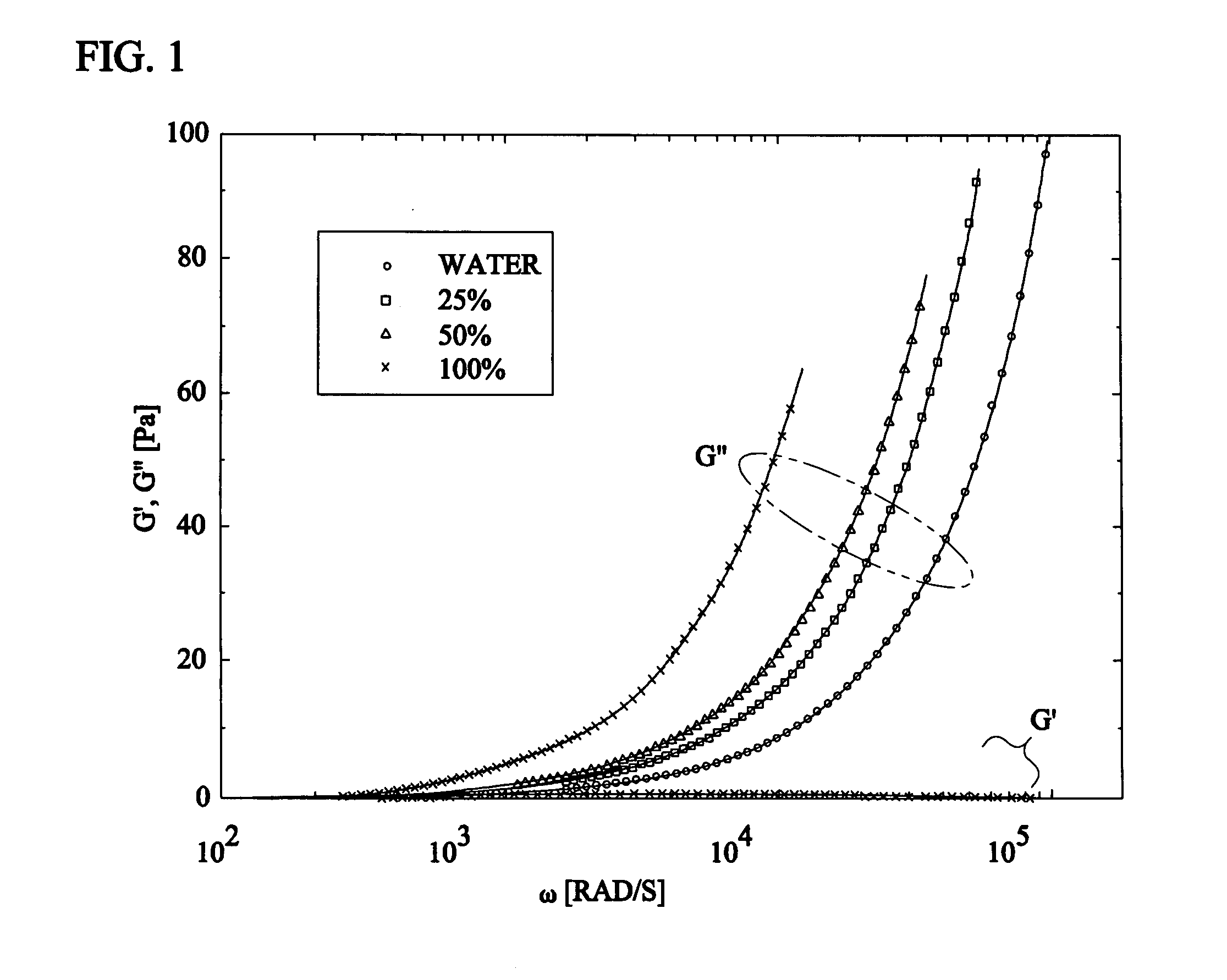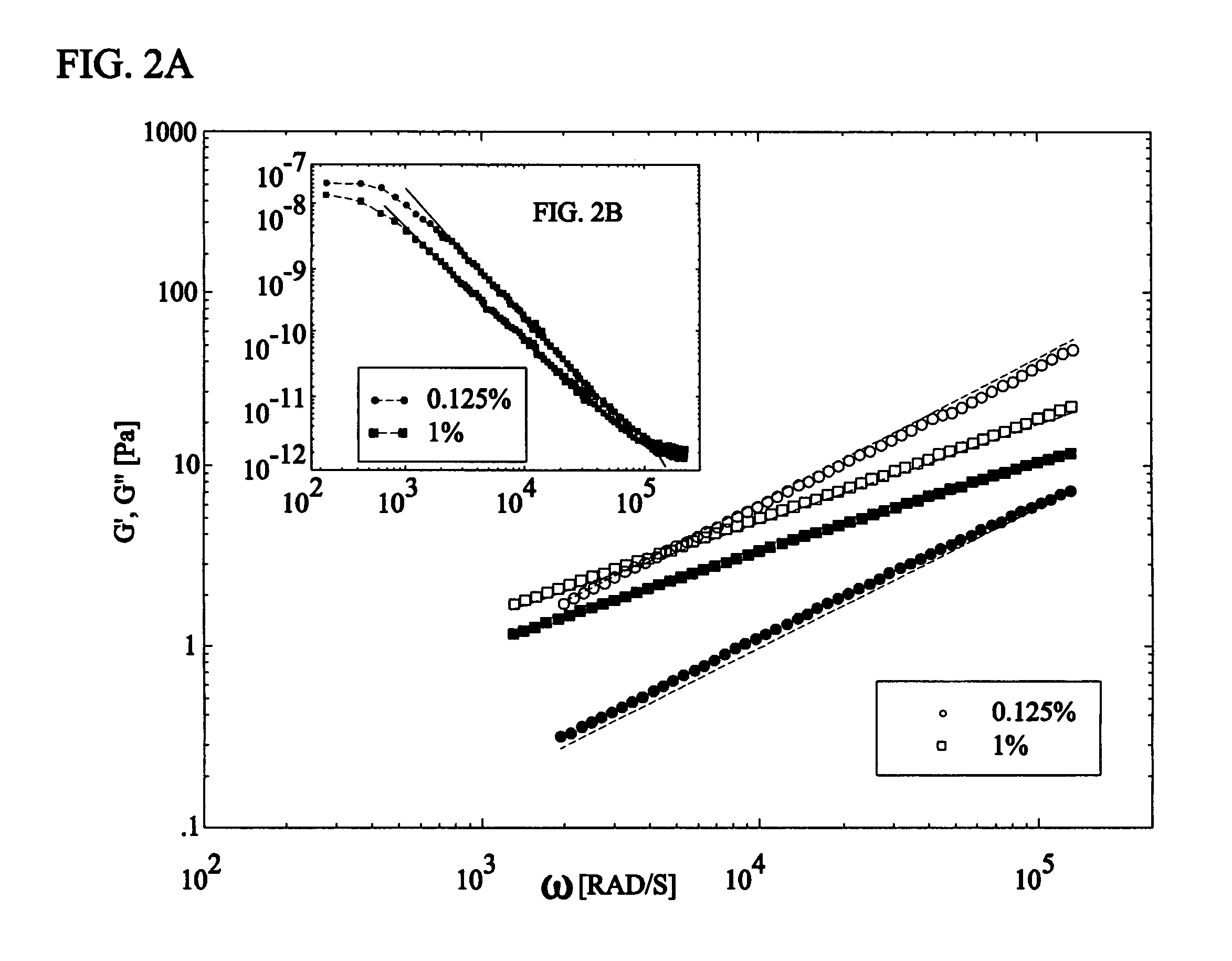Microrheology methods and systems using low-coherence dynamic light scattering
a microrheology and dynamic light scattering technology, applied in the direction of direct flow property measurement, instruments, measurement devices, etc., can solve the problems of large-scale rheological instruments used for soft materials, incomplete prior art systems with various deficiencies, and general limitations in frequency ranges of prior art systems at several khz, etc., to achieve high degree of experimental flexibility and applicability
- Summary
- Abstract
- Description
- Claims
- Application Information
AI Technical Summary
Benefits of technology
Problems solved by technology
Method used
Image
Examples
first preferred embodiment
[0046]FIG. 6 further describes a first preferred embodiment 100 of a low-coherence radiation being emitted by a low-coherence light source 10 such as a superluminescent diode which can be coupled into a single-mode optical fiber 20, which represents one arm a 1×2 fiber coupler 20, 30, 40, 50. The output 42 of the coupler can be immersed in the fluid 90 under investigation. The light backscattered by the probe particles can be collected through the same fiber 40 through fiber 50 to the detector 60 and the signal can be analyzed in the frequency domain by a spectrum analyzer 80 such as SR760.
[0047]The signal detected is an interference of two electromagnetic fields: the fluctuating field backscattered by the particles undergoing thermal motion and the static field due to Fresnel reflection at the fiber-fluid interface. The fluctuating light can be detected only from the coherence volume, defined by the coherence length and the transversal dimension of the fiber core, in which the opti...
second preferred embodiment
[0065]FIG. 8 shows a second preferred embodiment 200 of the microheology low-coherence light scattering invention used with a medium to be tested using a time correlator 210. The other components in FIG. 8 are identical to and function similar to that of the previous figures.
[0066]Referring to FIG. 8, the analysis of the dynamic signal originating in the picoliter volume 90 can be performed in the time domain. Instead of a frequency analyzer one could use a temporal correlator 210 (for instance Brookhaeven 2-000) to obtain the temporal autocorrelation function of the fluctuating signal. It is known that between time and frequency domains there is a strict relationship determined by a conventional Fourier transformation. The entire analysis described before can be performed in the time domain using data provided by a time correlator.
third preferred embodiment
[0067]FIG. 9 shows a third preferred embodiment 300 of the microheology low-coherence light scattering invention using a fiber splitter 310 and reference mirror 320.
[0068]Referring to FIG. 9, the reference field can be provided by another fiber 325 as shown in the figure. In this case, the reflection from the end of the fiber in contact with the medium is suppressed by, for instance, angle cut. A two-by-two fiber optic splitter 310 can be used to provide the necessary reference filed. Reflection from the end of the fourth fiber 325 or from an external mirror 320 at this end can provide the reference field. This embodiment eliminates the reflectivity requirement in the measurement fiber. The rest of the operation is functionally identical with the previous embodiments.
PUM
| Property | Measurement | Unit |
|---|---|---|
| frequency | aaaaa | aaaaa |
| volumes | aaaaa | aaaaa |
| diameter | aaaaa | aaaaa |
Abstract
Description
Claims
Application Information
 Login to View More
Login to View More - R&D
- Intellectual Property
- Life Sciences
- Materials
- Tech Scout
- Unparalleled Data Quality
- Higher Quality Content
- 60% Fewer Hallucinations
Browse by: Latest US Patents, China's latest patents, Technical Efficacy Thesaurus, Application Domain, Technology Topic, Popular Technical Reports.
© 2025 PatSnap. All rights reserved.Legal|Privacy policy|Modern Slavery Act Transparency Statement|Sitemap|About US| Contact US: help@patsnap.com



